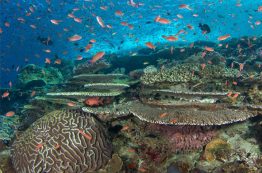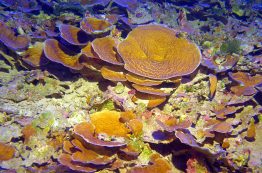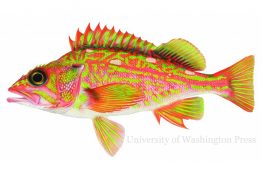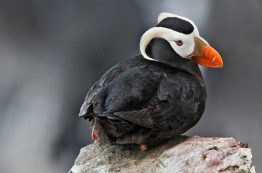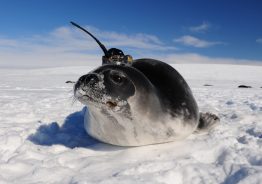A new study released July 1 in Nature Climate Change gives hope for coral reefs. Launched by the nonprofit Coral Reef Alliance, with lead and senior authors at the University of Washington, the study is one of the first to demonstrate that management that takes evolution and adaptation into account can help rescue coral reefs from the effects of climate change.
Read more at UW News »Deep submersible dives shed light on rarely explored coral reefs
Just beyond where conventional scuba divers can go is an area of the ocean that still is largely unexplored. In waters this deep — about 100 to at least 500 feet below the surface — little to no light breaks through. Researchers must rely on submersible watercraft or sophisticated diving equipment to be able to study ocean life at these depths, known as the mesophotic zone.
Read more at UW News »First book published on fishes of the Salish Sea
The first book documenting all of the known species of fishes that live in the Salish Sea is now available. “Fishes of the Salish Sea” is a three-volume book and is the culmination of more than 40 years of research by authors Theodore W. Pietsch, curator emeritus of fishes of the Burke Museum and University of Washington professor emeritus of aquatic and fishery sciences, and James W.
Read more at UW News »Warming climate in the Bering Sea leads to mass seabird die-off
A new study involving University of Washington researchers examine the events leading to a mass die-off of an estimated 3,150 to 8,800 seabirds on the shores of St. Paul Island, an Alaskan volcanic island located in the Bering Sea.
Read the full study »Mysterious holes in Antarctic sea ice explained by years of robotic data
The winter ice on the surface of Antarctica’s Weddell Sea occasionally forms an enormous hole. A hole that appeared in 2016 and 2017 drew intense curiosity from scientists and reporters. Though even bigger gaps had formed decades before, this was the first time oceanographers had a chance to truly monitor the unexpected gap in Antarctic winter sea ice. A new study led by researchers in the UW School of Oceanography combines satellite images of the sea ice cover, robotic drifters and even seals outfitted with sensors to better understand the phenomenon.
Read more at UW News »
